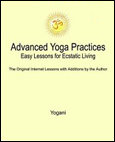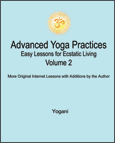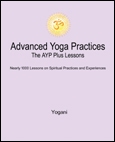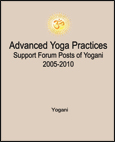|
Public Home | Plus Home | Main Lessons | Tantra Lessons | Public Forum | Plus Forum | Downloads | Books Topic Paths | Search | Training-Retreats | Testimonials | Survey | Interviews | MultiMedia | Contact | Donate |
|
Advanced Yoga Practices Note: For the Original Internet Lessons with additions, see the AYP Easy Lessons Books. For the Expanded and Interactive Internet Lessons, AYP Online Books, Audiobooks and more, see AYP Plus. Lesson 413 - Is Enlightenment No-Thing or All-Things? (Audio)
AYP Plus Additions:
From: Yogani New Visitors: It is recommended you read from the beginning of the archive, as previous lessons are prerequisite to this one. The first lesson is, "Why This Discussion?"
A: Yes, it does all end up in the same place. And where is that? Is it a place of non-doing, or a place of outpouring divine love? Or both at the same time? And if it is a doing, is it personal, or impersonal? A non-doing that is doing? What we have many times called "stillness in action." It is a paradox. What we call it is only a matter of how things may be unfolding and how they may be represented as objects in the mind. For example, is no desire really no desire? It is common for AYP practitioners to express concern about having "no desire" at one stage or other in their development. Is that expression of concern no desire? Of course not. It is a flat period of witness that we may experience before it becomes visible as a radiance in daily activity. The personal motivation may not be there anymore, and it may be missed (like a lost habit), but the motivation to act will not be gone. It comes from deeper within, from inner silence. Otherwise, we would not get out of bed in the morning. Regarding "kundalini," it is only a name that points to evolutionary energy moving within us. Some traditions choose to not name the energetic stage of unfoldment, but its existence on all paths cannot be denied. Named or not, the energetics will occur. If there is a claim of no energetics, they have either not occurred yet, or are being ignored. It is not necessary to make a rush to energetics (kundalini). And it is not necessary to deny them either. All things in their own time. Is "perfect clarity" an end state? Is "outpouring divine love" an end state? Is enlightenment no-thing or all-things? The perceptions of these experiences are mere structures in the mind, signifying little. The truth is that it is neither of these, and both of these, and there is no end to it. That is the point. Anyone who says "This is it," and stands pat on that, is missing the point, because there is no "IT," no end state. No divorce from life, no permanent engagement in life. It is a process in the here and now. Those who say it is no-thing may find themselves a bit stuck and yet to become spiritually integrated. Non-involvement in life is duality. Those who say it is only all-things are yet to find they are the One who does nothing amidst all things. There is no clear answer. Those who seek a clear answer will not find one. Clarity comes when the paradox of simultaneous non-doing and doing becomes ordinary in daily experience, and there is no need to say it is this or that anymore. It just is, and we are both in it and beyond it. This includes living through the apparent inequities in life without suffering. There is only one way we can find out what this is about. Practice. There is a process, a path, and we can travel it not with the conceptual mind, but with the vehicle of our neurobiology. We are the doorway, and that doorway takes us beyond the mind and all of its definitions. We don't have to take anyone's word for it. Let's practice. Then we will know. The guru is in you. Discuss this Lesson in the AYP Plus Support Forum Note: For detailed instructions on building and maintaining a balanced daily practice routine with self-pacing, see the Eight Limbs of Yoga Book, and AYP Plus. |
|
|
|
Join the Mail List:
AYP Retreats
eBooks - PDF, EPUB
FREE eBooks with
SAVE with Bundled
|

























